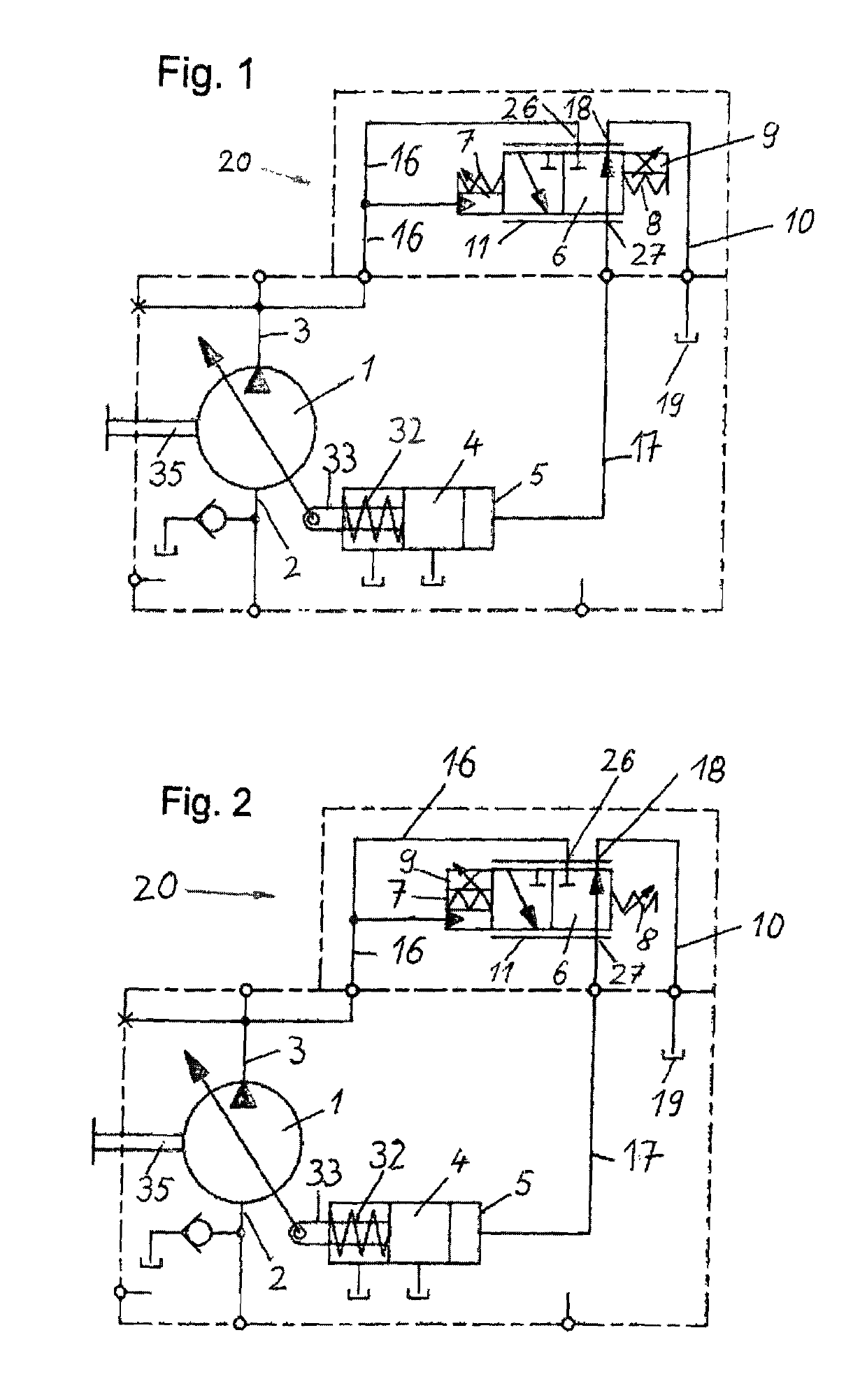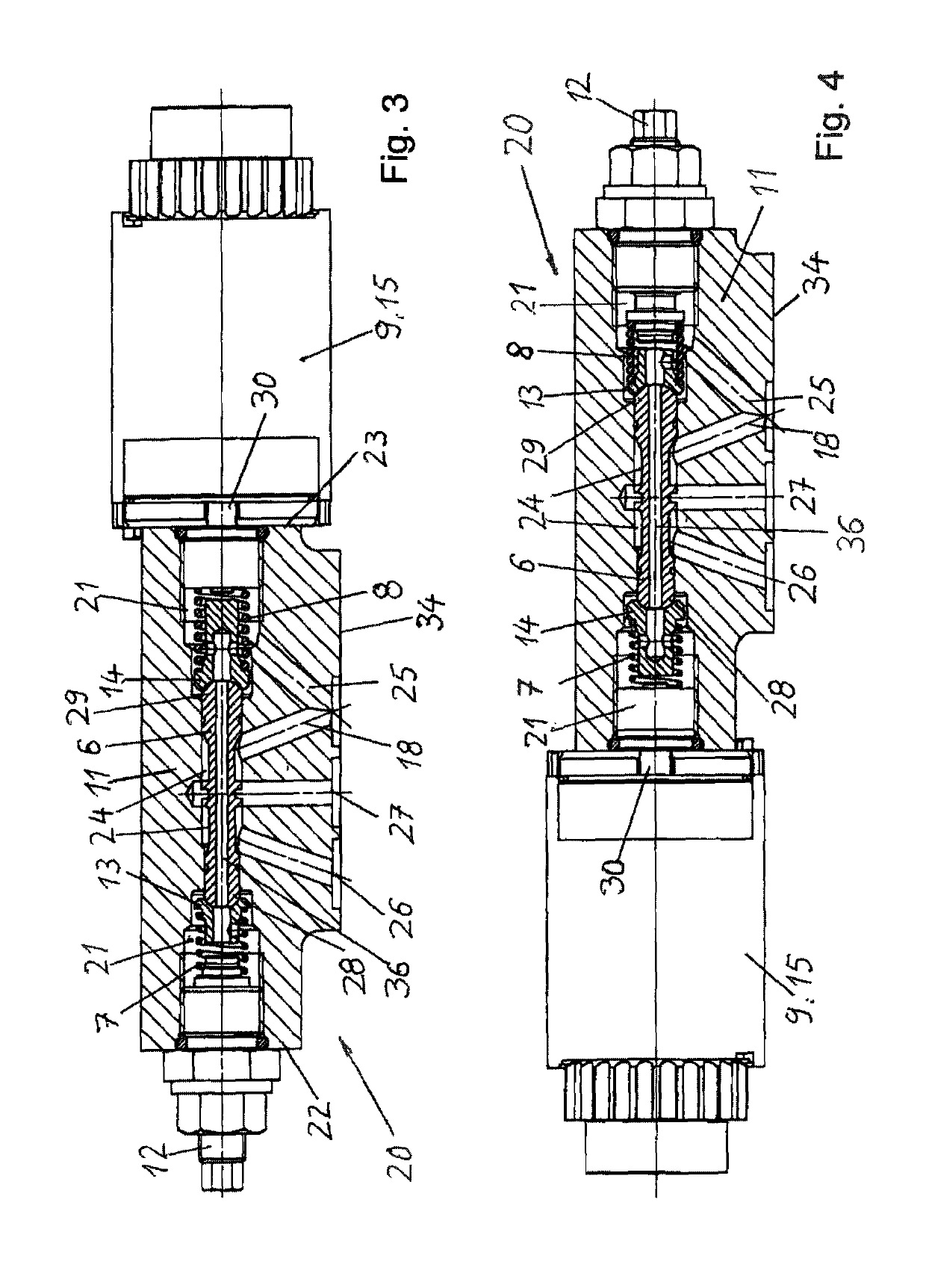Control unit for hydraulic variable displacement pumps and variable displacement pump with a control unit
a control unit and variable displacement technology, applied in the direction of pump control, positive displacement liquid engine, thin material handling, etc., can solve the problem of requiring a large number of components, and achieve the effect of increasing the deflection of the variable displacement pump, reducing the force, and creating flexibility
- Summary
- Abstract
- Description
- Claims
- Application Information
AI Technical Summary
Benefits of technology
Problems solved by technology
Method used
Image
Examples
Embodiment Construction
[0029]FIG. 1 shows a variable displacement pump 1 with a control device 20 according to the invention in diagrammatic form. The type of the variable displacement pump 1 is optional, providing that the adjustment of the displacement volume can be controlled by means of an adjustment element that can be activated by a servo piston 4.
[0030]Preferred examples here are axial piston pumps with an adjustable swash plate whose angular position can be specified by means of a servo piston 4. The variable displacement pump 1 is powered by a drive shaft 35 with a drive motor not shown here operating at a constant rotational speed, for example, and it displaces pressure fluid in an open circuit. The variable displacement pump comprises and inlet 2 and an outlet 3 for the pressure fluid and is connected to a consumer not shown here via pressure lines, as well as being connected to the control device 20 via a pressure line 16 and to a tank 19 for the pressure fluid via a drain line 10.
[0031]The co...
PUM
 Login to View More
Login to View More Abstract
Description
Claims
Application Information
 Login to View More
Login to View More - R&D
- Intellectual Property
- Life Sciences
- Materials
- Tech Scout
- Unparalleled Data Quality
- Higher Quality Content
- 60% Fewer Hallucinations
Browse by: Latest US Patents, China's latest patents, Technical Efficacy Thesaurus, Application Domain, Technology Topic, Popular Technical Reports.
© 2025 PatSnap. All rights reserved.Legal|Privacy policy|Modern Slavery Act Transparency Statement|Sitemap|About US| Contact US: help@patsnap.com



